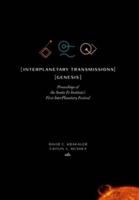Publisher's Synopsis
The simulated effects of the Radio Frequency Identification (RFID) tag emissions on ILS Localizer and ILS Glide Slope functions match the analytical models developed in support of DO-294B provided that the measured peak power levels are adjusted for 1) peak-to-average power ratio, 2) effective duty cycle, and 3) spectrum analyzer measurement bandwidth. When these adjustments are made, simulated and theoretical results are in extraordinarily good agreement. The relationships hold over a large range of potential interference-to-desired signal power ratios, provided that the adjusted interference power is significantly higher than the sum of the receiver noise floor and the noise-like contributions of all other interference sources. When the duty-factor adjusted power spectral densities are applied in the evaluation process described in Section 6 of DO-294B, most narrowband guidance and communications radios performance parameters are unaffected by moderate levels of RFID interference. Specific conclusions and recommendations are provided. LaBerge, E. F. Charles Langley Research Center NASA/CR-2007-214859, NCCSRTC-EFCL-0261B2












